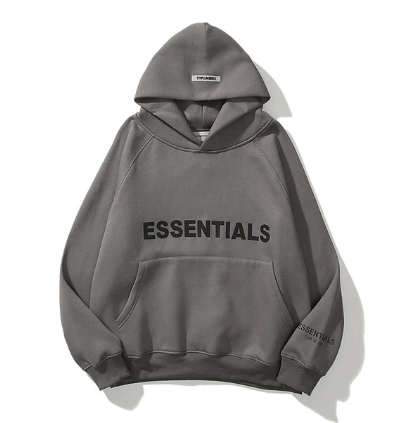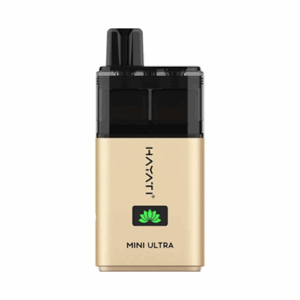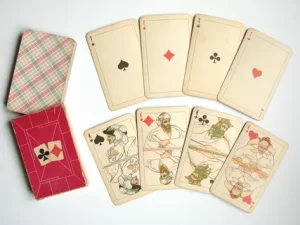In the crowded realm of fashion where flamboyance often steals the spotlight, Essentials has emerged as a champion of minimalism, function, and purpose-driven design. Born as a sub-label of Fear of God, Essentials has quickly carved its own identity by offering luxury-level streetwear at accessible prices. With a devotion to neutral palettes, clean lines, and high-quality fabrics, Essentials proves that less is not only more—it’s powerful.
This article unpacks the soul of Essentials—its inception, evolution, cultural influence, design philosophy, and why it continues to resonate with a global audience hungry for authenticity in their wardrobe.
From Fear to Focus: The Origins of Essentials
Essentials was launched in 2018 by Jerry Lorenzo, the visionary behind Fear of God. Lorenzo’s mainline label, launched in 2013, had already garnered immense respect in the fashion world for its distinct approach to American luxury streetwear. But Fear of God came with a premium price tag—one that many of Lorenzo’s core supporters, especially younger fans, couldn’t afford.
Thus, Essentials was conceived as a democratic extension of the Fear of God philosophy. It wasn’t just about cheaper versions of expensive pieces; Essentials was designed from the ground up with its own creative DNA. The focus was on high-quality basics that embraced the aesthetic ethos of Fear of God but with an approachability that invited a wider audience.
The DNA of Design: A Minimalist Manifesto
At the heart of Essentials is a tightly controlled design language built on neutrality, versatility, and comfort. The pieces—ranging from hoodies and sweatpants to T-shirts and outerwear—exude an unshakable calmness. Colorways are largely monochromatic: think sand, moss, taupe, black, and bone. Logos are subtle, often appearing in tonal prints or raised rubberized textures. Silhouettes are boxy yet drape elegantly, offering a blend of street swagger and relaxed sophistication.
Essentials does not chase trends. Instead, it refines staples into timeless forms. A hoodie isn’t just a hoodie—it’s an exploration of fabric weight, drop shoulder construction, and fleece softness. Every collection is an exercise in restraint, and this discipline allows the brand to produce garments that feel perpetually relevant.
Quality and Accessibility: A Balancing Act
One of the most impressive achievements of Essentials is its ability to offer high-quality clothing at mid-range prices. While Fear of God pieces can cost upwards of $1000, most Essentials items range between $40 and $120. This is no accident—it’s the result of thoughtful manufacturing partnerships, controlled distribution, and smart design compromises that don’t sacrifice quality.
Essentials garments are made from heavyweight cottons, brushed fleeces, and blended jersey fabrics that feel luxurious. Stitching is sturdy, details are clean, and the garments hold their shape wash after wash. This level of quality isn’t typically seen in pieces at this price point, and it gives Essentials a distinct edge over other so-called basics brands.
Cultural Cachet: Essentials in the Zeitgeist
In the age of Instagram and TikTok, where visibility often translates to viability, Essentials has leveraged cultural momentum with surgical precision. Celebrities like Kanye West, Justin Bieber, and Gigi Hadid have been spotted in Essentials, lending the brand an effortless cool factor. But unlike trend-driven hype brands that rely on drops and artificial scarcity, Essentials builds loyalty through consistency.
Its cultural resonance extends beyond celebrity endorsement. Essentials has become a staple among athletes, creatives, and students—people who appreciate comfort, clarity, and cohesion in their wardrobes. The brand’s name itself—”Essentials”—is an affirmation of its purpose. It’s not about standing out; it’s about being the foundation. And in a world overwhelmed by noise, that message resonates deeply.
The Power of Branding Without the Noise
Perhaps one of the most remarkable aspects of Essentials is how it has crafted a highly recognizable brand identity with such minimal visual elements. The font is plain. The logo placement is understated. There are no wild graphics, no flashy motifs. And yet, Essentials pieces are instantly recognizable.
This paradox—quiet yet distinctive—has become a blueprint for new-wave streetwear branding. The raised rubber “ESSENTIALS” text on the back of a hoodie or the leg of a sweatpant doesn’t scream for attention, but in the right circles, it whispers volumes. It signals taste, awareness, and a preference for understated quality.
Seasonal Collections: The Art of Iteration
Essentials releases several collections per year, but unlike many fashion labels, each drop is more evolutionary than revolutionary. Core silhouettes return season after season, often with slight tweaks to color, fabric, or fit. This iterative approach creates a sense of continuity that fans appreciate.
This also allows for experimentation within boundaries. For instance, a past season might see the introduction of mock-neck T-shirts or coach jackets, while another may bring in knitted pieces or puffer vests. These additions are always aligned with the Essentials aesthetic, ensuring the brand grows without losing its core identity.
Genderless Appeal: Fashion Without Boundaries
One of the more progressive elements of the Essentials philosophy is its inherently genderless design. While the collections are often labeled as men’s or unisex, the clothing is frequently worn across gender lines. The oversized cuts, neutral tones, and minimalist features make the garments adaptable for a wide range of body types and styles.
This flexibility is more than just a marketing ploy—it’s an honest reflection of how people want to dress today. Essentials doesn’t force gendered narratives onto its designs. It simply creates beautiful, well-made clothing and lets the wearer decide how it fits into their world.
The Fear of God Umbrella: Brand Synergy and Expansion
Though Essentials is a standalone brand, it benefits from its proximity to the Fear of God universe. Jerry Lorenzo’s leadership brings a shared ethos of spiritual inspiration, cultural introspection, and meticulous design across both lines. This brand synergy creates a halo effect; fans of Essentials often graduate to Fear of God, and vice versa.
The duality of the two brands—Fear of God as the aspirational flagship and Essentials as the accessible everyday—mirrors the dynamic seen in other high-fashion-to-street pipelines, such as Dior and Dior Homme, or Armani and Armani Exchange. But in the context of modern streetwear, this strategy feels fresh and deeply attuned to today’s consumer psychology.
Sustainability and the Future of Fashion
As the fashion industry grapples with environmental concerns and ethical production practices, Essentials finds itself at an interesting intersection. While not marketed explicitly as a sustainable brand, its approach to slow fashion—seasonless styles, quality-focused production, and avoidance of trend-chasing—aligns with many principles of sustainability.
The longevity of Essentials pieces means fewer throwaways. Consumers hold onto them longer, restyle them endlessly, and even pass them down. This circularity, born not from greenwashing but from genuine design intention, positions Essentials as a quietly sustainable brand in an increasingly eco-conscious marketplace.
Why Essentials Truly Is Essential
Essentials is more than just a clothing brand—it’s a philosophy of dressing that honors simplicity, quality, and intentionality. In a world inundated with choice, Essentials strips fashion down to its core: garments that feel good, look clean, and carry meaning.
By refusing to follow fast trends, embracing timeless design, and staying loyal to its founding principles, Essentials has become an indispensable part of the modern wardrobe. It empowers without overpowering.
Read More: theguestblogs






